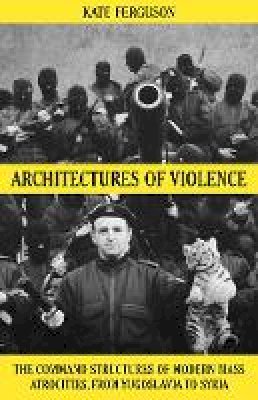11%OFF

Stock image for illustration purposes only - book cover, edition or condition may vary.
Architectures of Violence: The Command Structures of Modern Mass Atrocities
Kate Ferguson
€ 48.99
€ 43.41
FREE Delivery in Ireland
Description for Architectures of Violence: The Command Structures of Modern Mass Atrocities
Hardback. Most atrocities are committed by states yet they hide their culpability by recourse to paramilitary forces, as Ferguson explains. Num Pages: 256 pages. BIC Classification: GTJ; JPWS. Category: (UP) Postgraduate, Research & Scholarly. .
Paramilitary or irregular units have been involved in practically every case of identity-based mass violence in the modern world, but detailed analysis of these dynamics is rare. Through exploring the case of former Yugoslavia, Kate Ferguson exposes the relationships between paramilitaries, state commands, local communities, and organised crime present in modern mass atrocities, from Rwanda and Darfur to Syria and Myanmar. Visible paramilitary participation in modern mass atrocities has succeeded in masking the continued dominance of the state in a number of violent crises. Irregular combatants have participated so significantly in committing atrocity crimes because political elites benefit from using unconventional forces to fulfil ambitions that violate international law--and international policy responses are hindered when responsibility for violence is ambiguous. Ferguson's inquiry into these overlooked dynamics of mass violence unveils substantial loopholes in current atrocity prevention architecture. Until these are addressed, state authorities will likely continue to use irregular combatants as perpetrators of atrocity.
Product Details
Format
Hardback
Publication date
2020
Publisher
C Hurst & Co Publishers Ltd United Kingdom
Number of pages
256
Condition
New
Number of Pages
256
Place of Publication
London, United Kingdom
ISBN
9781849048118
SKU
V9781849048118
Shipping Time
Usually ships in 5 to 9 working days
Ref
99-50
About Kate Ferguson
Dr Kate Ferguson is a foreign policy expert specialising in atrocity prevention and civilian protection. She is Co-Executive Director of Protection Approaches, a charity she co-founded in 2014 to change how the world views hate and other forms of identity-based violence - and by so doing, change the way communities, governments and international institutions respond to and prevent it. She is the first Chair of Policy at the European Centre for the Responsibility to Protect and Honorary Research Fellow at the University of East Anglia. Kate has an MPhil in Russian and East European Studies from the University of Oxford and a PhD from the University of East Anglia. She tweets at @WordsAreDeeds.
Reviews for Architectures of Violence: The Command Structures of Modern Mass Atrocities
'Architectures of Violence is an important book for anyone committed to the prevention of mass atrocities. Kate Ferguson challenges pervasive assumptions about where these crimes come from and sets us on the road to more effective prevention strategies.'
Adama Dieng, UN Secretary-General's Special Adviser for the Prevention of Genocide and former registrar of the International Criminal Tribunal for Rwanda 'This book provides a new understanding of the role of non-state military actors in identity-based conflicts. It is rich in detail and will contribute much to our understanding of the nature of non-state armed groups
rigorous and insightful.'
Rachel Kerr, Reader in International Relations and Contemporary War, King's College London 'Architectures of Violence is a well-written, comprehensive study of paramilitarism during the wars in Yugoslavia in the 1990s. Ferguson strikes a good balance between empirical depth and conceptual breadth
her conclusions are relevant beyond the specific dynamics of that conflict.'
Ugur Ungor, Professor of Holocaust and Genocide Studies, University of Amsterdam
Adama Dieng, UN Secretary-General's Special Adviser for the Prevention of Genocide and former registrar of the International Criminal Tribunal for Rwanda 'This book provides a new understanding of the role of non-state military actors in identity-based conflicts. It is rich in detail and will contribute much to our understanding of the nature of non-state armed groups
rigorous and insightful.'
Rachel Kerr, Reader in International Relations and Contemporary War, King's College London 'Architectures of Violence is a well-written, comprehensive study of paramilitarism during the wars in Yugoslavia in the 1990s. Ferguson strikes a good balance between empirical depth and conceptual breadth
her conclusions are relevant beyond the specific dynamics of that conflict.'
Ugur Ungor, Professor of Holocaust and Genocide Studies, University of Amsterdam
